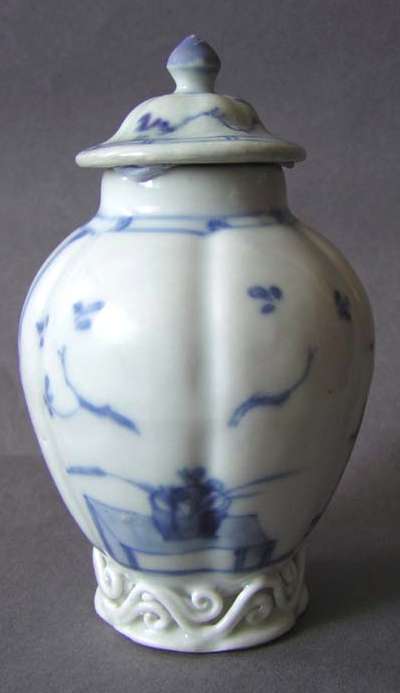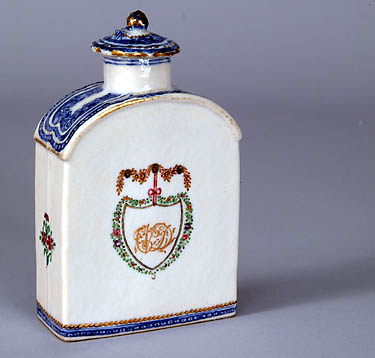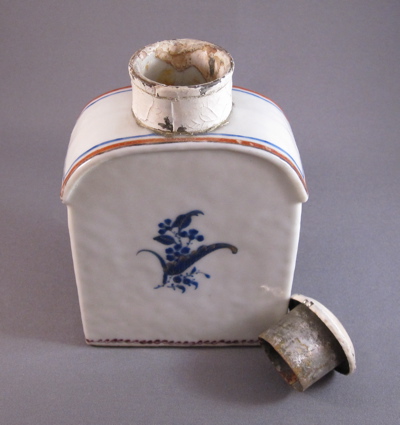回家路的博客
这一生,我们都在走在回家的路上!
 A tea caddy is a box, jar, canister, or other receptacle used to store tea.
A tea caddy is a box, jar, canister, or other receptacle used to store tea.

The word is believed to be derived from catty, the Chinese pound, equal to about a pound and a third avoirdupois. The earliest examples that came to Europe were of Chinese porcelain, and approximated in shape to the ginger-jar. They had lids or stoppers likewise of china, and were most frequently blue and white. Until about 1800 they were called tea canisters rather than caddies.[1]
As the use of the jar waned and the box increased, the provision of different receptacles for green and black tea was abandoned, and the wooden caddy, with a lid and a lock, was made with two and often three divisions, the centre portion being reserved for sugar. In the late 18th and early 19th century, caddies made from mahogany and rosewood were popular.Earlier tea caddies were made of either porcelain or faience. Later designs had more variety in materials and designs. Wood, pewter, tortoiseshell, brass, copper and even silver were employed, but in the end the material most frequently used was wood, and there still survive vast numbers of Georgian box-shaped caddies in mahogany,rosewood, satin-wood and other timbers. These were often mounted in brass and delicately inlaid, with knobs of ivory, ebony or silver. Many examples were made in Holland, principally of the earthenware of Delft. There were also many English factories producing high quality goods.
The larger varieties were known as tea chests. As tea grew cheaper there was less concern with the appearance of caddies, and as a result they fell out of use.
The use of "tea caddy" instead of "biscuit tin" fell out of use in the early 1900s.
https://en.wikipedia.org/wiki/Tea_caddy
Tea Caddy (Tea Canisters)
 |
|
Chinese export porcelain tea caddy from ca 1740. Decorated in 18th century wucai. Enamel part of the decoration lost |
Airtight containers for storing tea. Used in China to store tea sent up to the Emperor as Tribute from provinces known for its tea. In use in China from the Song dynasty. Became most fashionable in Europe with the introduction of the new fashion for hot drinks, including tea, following the visit to Paris of the Ambassador of Siam in the early 18th century. Small and decoratice Tea Caddy's are usually found in porcelain from the 18th century onwards. Larger examples for export and shipping often in pewter, sometimes fitted with wooden boxes to contain several.
http://gotheborg.com/glossary/teacaddy.shtml












 o
o






